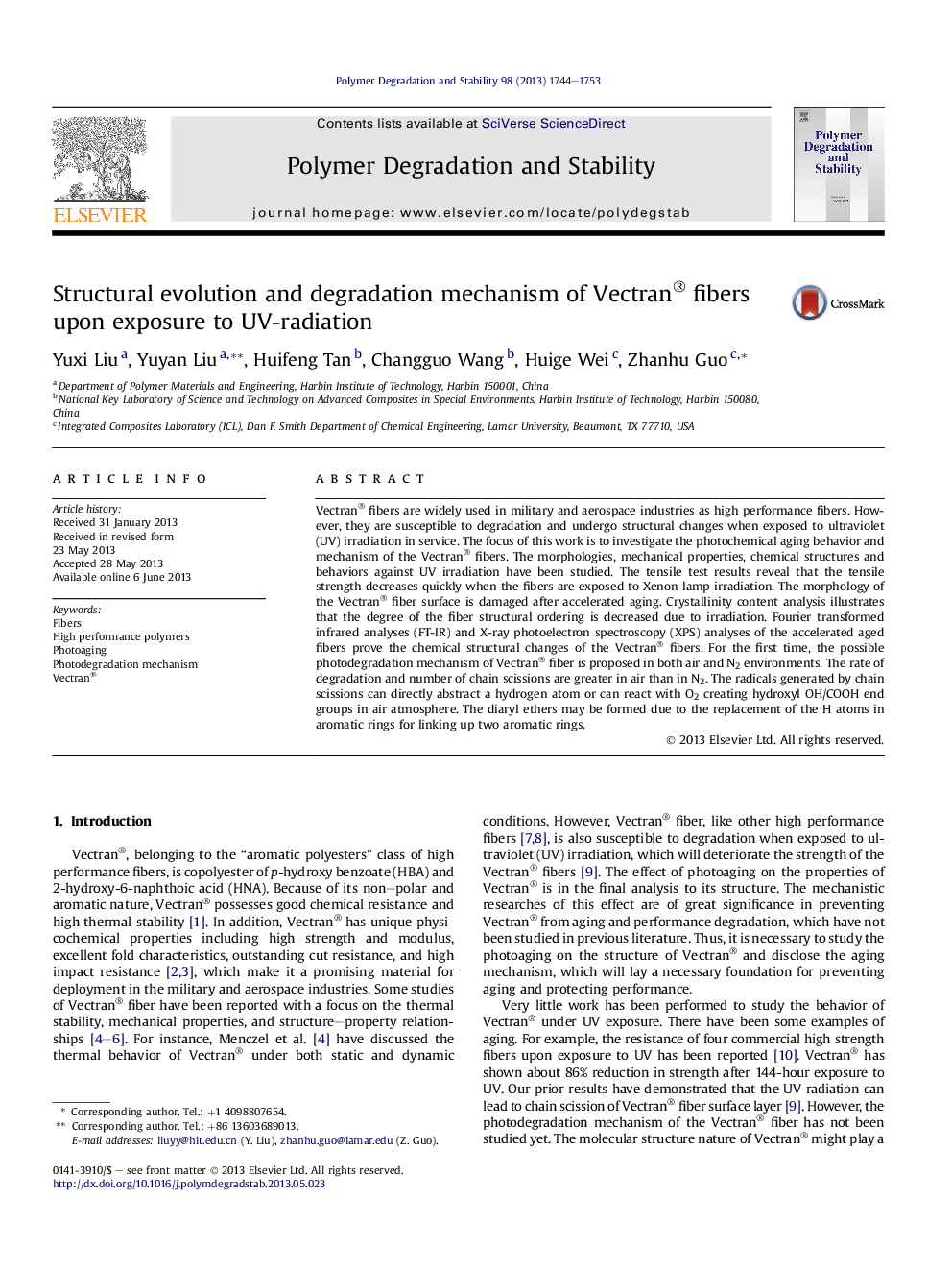| Article ID | Journal | Published Year | Pages | File Type |
|---|---|---|---|---|
| 5202029 | Polymer Degradation and Stability | 2013 | 10 Pages |
Abstract
Vectran® fibers are widely used in military and aerospace industries as high performance fibers. However, they are susceptible to degradation and undergo structural changes when exposed to ultraviolet (UV) irradiation in service. The focus of this work is to investigate the photochemical aging behavior and mechanism of the Vectran® fibers. The morphologies, mechanical properties, chemical structures and behaviors against UV irradiation have been studied. The tensile test results reveal that the tensile strength decreases quickly when the fibers are exposed to Xenon lamp irradiation. The morphology of the Vectran® fiber surface is damaged after accelerated aging. Crystallinity content analysis illustrates that the degree of the fiber structural ordering is decreased due to irradiation. Fourier transformed infrared analyses (FT-IR) and X-ray photoelectron spectroscopy (XPS) analyses of the accelerated aged fibers prove the chemical structural changes of the Vectran® fibers. For the first time, the possible photodegradation mechanism of Vectran® fiber is proposed in both air and N2 environments. The rate of degradation and number of chain scissions are greater in air than in N2. The radicals generated by chain scissions can directly abstract a hydrogen atom or can react with O2 creating hydroxyl OH/COOH end groups in air atmosphere. The diaryl ethers may be formed due to the replacement of the H atoms in aromatic rings for linking up two aromatic rings.
Related Topics
Physical Sciences and Engineering
Chemistry
Organic Chemistry
Authors
Yuxi Liu, Yuyan Liu, Huifeng Tan, Changguo Wang, Huige Wei, Zhanhu Guo,
